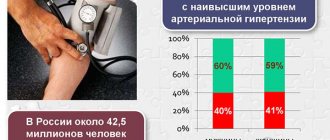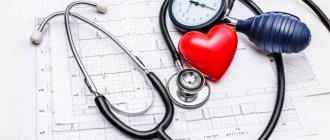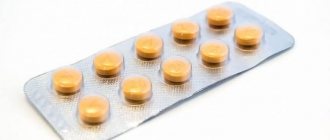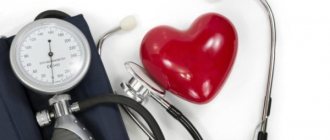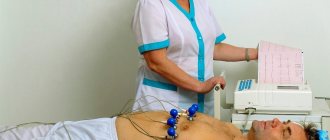Blood pressure is the difference between the force of blood on the vessels (primarily arteries) and atmospheric values.
A normal reading ranges from 100 to 139 over 60-89. Such a “standard” has long been established by the World Health Organization, based on rich empirical material.
Anything lower is hypotension, anything higher is the opposite process (hypertension). Both are dangerous, both need to be treated.
A blood pressure of 80 over 50 is considered low; according to the classification of the WHO and national cardiological communities (in particular Russian, Ukrainian), this is mild hypotension. In reality, the assessment may vary, but the process is obvious.
There is also a maximum lower limit of pulse pressure (the difference between systolic (upper) and diastolic (lower) indicators). Such hypotension requires routine diagnosis and therapy to avoid complications.
What does a tonometer level of 80/50 mean?
Such blood pressure numbers indicate problems in the body. But not always.
Physiological factors also occur, but their share in the total number of clinically significant situations is quite small, about 30%.
Diseases are much more common, the remaining 70% are problems with the heart, blood vessels, hormonal levels and nervous system, less often the kidneys and excretory tract.
Hypotension does not always carry the same danger. Patients with a chronic increase in blood pressure, as well as people whose normal working pressure is above 130 to 80, experience much greater discomfort, and such a tonometer reading for them is determined by a significant threat.
For your information: the likelihood of complications in patients with hypertension when blood pressure decreases is almost three times higher.
Why is low blood pressure dangerous?
This pathological condition does not pose a direct threat to human life. But if hypotension is observed for a long time, then compensatory mechanisms are activated aimed at eliminating changes in blood pressure. In the future, this leads to the formation of hypertensive status, which develops after some time. According to experts, hypotension in youth provokes the development of hypertension in old age.
Secondary hypotension, in which there is a systematic disturbance of blood circulation in vital organs, becomes the cause of serious dysfunction.
Hypotension leads to the development of the following complications:
- decreased visual function;
- impairment of motor coordination as a result of disruption of the vestibular apparatus;
- risk of injury in a fainting state;
- cardiac disorder;
- decrease in the speed of brain processes.
The presence of hidden pathologies in the body may indicate severe pathologies. Hypotension is an early sign of internal bleeding, heart attack, hypothyroidism, and anaphylactic shock. Low blood pressure may be one of the manifestations of autonomic dysfunction of the nervous system.
Are these indicators normal during pregnancy?
Again, there is no definite answer. The gestational process differs in severity (toxicosis, fetal size, etc. play a role), and the individual characteristics of the body of a particular woman must also be taken into account.
During pregnancy, a decrease in blood pressure is quite possible, within wide limits. Blood pressure 80/50 is also likely, but whether this is normal or not will only be understood through constant monitoring of the condition.
If during the gestation period the numbers do not change or deviate minimally from the primary values, most likely we are talking about a physiological process. Otherwise, you need to look for the cause of the blood pressure surges.
The diagnosis, as a rule, is very difficult to make; it is often determined after the fact, when delivery has occurred. Within 2-3 weeks everything should return to normal. If this is not the case, an appropriate diagnosis is made.
Natural causes of low blood pressure
- Peak hormonal states.
Pregnancy has already been mentioned, but this is not the only process. Puberty or puberty in adolescents 12-19 years old. Accompanied by jumps in blood pressure, in this case the tonometer readings are unstable, it is necessary to evaluate the frequency of changes and their scale.
If levels vary between 10-30 mmHg, no assistance is required. But throughout the entire process it is worth seeing a cardiologist at least once a year.
Menstrual cycle. During the first and second phases, a slight persistent drop in blood pressure is possible. This is not observed in all women and is rather an individual feature of the body.
The climacteric process. Representatives of both sexes. It usually ends with an increase in blood pressure, but options are possible.
A blood pressure of 80 to 50 during pregnancy is possible, but the woman still needs to be monitored so as not to miss pathological changes that “grow profusely” due to gestation.
- Physical development of the body.
A typical condition for amateur and professional athletes. In addition to a decrease in blood pressure, a weakening of cardiac activity occurs.
The usual situation: blood pressure is 80 over 50 or less, heart rate is about 50 beats per minute. This phenomenon does not pose a danger to life and health, but has a downside: with prolonged absence of physical activity, the likelihood of cardiac arrest or heart attack is higher, since the organ gets used to functioning at an intense rhythm.
- Work in hazardous, hot industries.
Steel foundries, glass factories and the like. The body's adaptation to the unfavorable conditions of the surrounding artificial environment is affected.
If the body does not adapt, problems can be fatal. Such professional activity is not suitable for everyone; you need to evaluate your strengths. In addition, fatal complications are possible even among adapted workers.
- Hot, stuffy climate.
This applies to a greater extent to residents of the equatorial regions and areas close to them. But other patients also have the same protective mechanism, including some regions of Russia, Ukraine, and Kazakhstan that are unfavorable.
The process of lowering pressure is observed in people who are temporarily in unusually hot conditions. This is the so-called acclimatization. It develops in several stages and ends after 2-6 days.
Again, patients prone to problems with the cardiovascular system are not recommended to visit hot areas; it is dangerous and impractical; instead of relaxation, there is a risk of getting health problems and a significant deterioration in well-being.
- Meteor dependence. It manifests itself as both high and low blood pressure, it all depends on the individual characteristics of the body.
- Abuse of gestagenic drugs. Young women and the fairer sex are guilty of this during menopause.
- Incorrect use of antihypertensive drugs. The regimen, dosage, and the names themselves play a role. If the course is not prescribed correctly, the pressure will drop, which is fraught with complications.
Natural factors are relatively rare.
Technical specifications
Parameters and technical characteristics of the pump K 80-50-200:
Pump dimensions K80-50-200
- per hour the pump supplies 50 cubic meters. meters of liquid under a pressure of 50 m;
- the motor has a power of 15 kW;
- pump length – 1 m 13 cm;
- width – 38 cm;
- weight – 56 kg;
- the weight of the entire unit is 235 kg.
These dimensions must be taken into account when installing the pump. A flat horizontal concrete platform is prepared for it. It is installed on a foundation, the weight of which is one and a half times greater than the platform, and the parameters exceed the frame of the device by 1 m.
The center of the concrete slab is determined, the electric pump unit K 80-50-200 is installed, and it is fixed. When connecting pipes to the unit, make sure that they do not press and do not transfer load to the housing.
The less noise and vibration there is in the system, the better and longer the console pump K 80-50-200 will work. Regularly carry out preventive inspections of the unit, checking the quality of connections of individual elements of the device and the reliability of fastening to the base. Lubricate the bearings with Litol 24.
Pathological causes
The list of possible diseases includes:
- Problems with the heart itself. A common option. Congenital and acquired defects, long-term hypotension, cardiosclerosis after myocardial infarction, mitral valve stenosis and other conditions. Despite their diversity, they are accompanied by almost the same symptoms: chest pain, shortness of breath, arrhythmia such as tachycardia, bradycardia, or changes in the time between each subsequent beat. Many defects do not manifest themselves at all; the only sign of the condition is cardiac arrest.
- Atherosclerosis of the aorta and its branches. Other vascular problems affecting the pulmonary and renal arteries. Accompanied by both a fall and an increase in blood pressure to significant levels and 80/50 mm Hg. Art. not the limit. There are no symptoms other than some interruptions in the functioning of the heart.
- Endocrine pathologies. Hypothyroidism (lack of thyroid hormones), hypocortisolism (cortisol deficiency). Both are the result of tumors, operations performed, and congenital anatomical defects. Symptoms are varied: in addition to a decrease in blood pressure, hypothermia, weakness, drowsiness, and changes in body weight also occur. Treatment by an endocrinologist.
- Kidney problems. The list of diseases is wide, the reason for the drop in blood pressure levels lies in a violation of fluid removal on the one hand, and on the other in a decrease in the concentration of renin in the blood (it is involved in regulating vascular tone along with other substances: aldosterone and angiotensin-II).
The symptoms are approximately the same: lower back pain, polyuria (increased daily urine output), the reverse process, frequent false urges to visit the toilet.
- Hepatitis or cirrhosis of the liver. The synthesis of a special prehormone is disrupted. Hence the impossibility of normal regulation of vascular tone. Manifestations are typical: pain in the right side, bitterness in the mouth, discoloration of feces, yellowness of the skin.
The causes of pressure 80 to 50 are pathological in 70% of cases, the remaining 30% are due to natural factors presented.
The assessment is carried out by a team of doctors after diagnosis. In the absence of data for organic damage to systems, physiological factors are sought.
Why are blood pressure levels decreasing?
The reasons for a decrease in blood pressure can be both physiological and pathological. A decrease in indicators is mainly characteristic of older people, since stroke volume of blood decreases with age, and vascular walls become less elastic. These processes lead to a minimal pulse difference between the upper and lower pressure readings. Pathological causes are associated with disruption of the functioning of certain organs and systems, whose functional state affects the activity of the cardiovascular system.
Despite the large number of provoking factors, the mechanism of development of arterial hypotension is associated with the main processes:
- Reduction of stroke and cardiac output (myocarditis, heart attack, severe forms of arrhythmia, overdose of antihypertensive drugs).
- Reduction in circulating blood volume (internal bleeding, ruptured spleen, ruptured aortic aneurysm).
- Decreased resistance of peripheral vessels (decreased vascular tone may occur due to toxic or infectious effects).
- Insufficient venous flow to the myocardium (massive ascites, pleurisy).
A pressure of 80 to 60 may indicate a violation of vascular regulation by the centers of the autonomic nervous system, a decrease in the activity of pressure regulation mechanisms by the renin-angiotensin-aldosterone system, and a violation of the sensitivity of vascular receptors to adrenal hormones.
Important! In some cases, low blood pressure is hereditary, so the risk of developing the condition increases if close relatives are diagnosed with hypotension and neurocirculatory dystonia. The formation of pathology can occur under the influence of stimulating factors in the form of insufficient elasticity of arterial walls and their increased tone.
How can you raise blood pressure at home?
This is not so difficult to do, but you need to strictly follow the algorithm:
- Measure your blood pressure level and record the numerical value.
- Take a caffeine tablet, maybe two. In the absence of this, Citramon will be used, but it is more dangerous due to the presence of paracetamol in the composition. Both drugs should be in your home medicine cabinet.
- Drink a tonic drink of your choice, you can have strong tea, one or two cups.
- Take a horizontal position, relax and do not make sudden movements to avoid a further drop in blood pressure according to the orthostatic pattern.
If after 20 minutes there is no effect, take tincture of eleutherococcus (one teaspoon), ginseng (30 drops). If you don't have it, lemon with cinnamon and honey in the amount of 3 teaspoons will do.
If after all the actions the blood pressure remains the same, you need to call an ambulance.
We are definitely not talking about a physiological phenomenon. There is a pathogenic process. We need to figure out which one it is.
What to avoid:
- Physical activity.
- Drugs that lower blood pressure (beta blockers, ACE inhibitors, antiarrhythmic drugs and others).
- Hot baths, contrast showers.
- Alcohol.
How to deal with the problem?
Only a doctor can tell you what to do with low blood pressure after carrying out the necessary diagnostic measures. Doctors do not recommend self-medication; this is especially dangerous during pregnancy, when not only the health of the mother, but also the child is at risk.
If during the diagnosis a dangerous disease was discovered that served as a prerequisite for hypotension, it is first necessary to treat it. As you heal, your blood pressure will return to normal on its own.
In the absence of serious pathologies, the doctor may prescribe light herbal tonics. What to do in this case? Tinctures of Chinese lemongrass, eleutherococcus, ginseng, as well as caffeine-based preparations will help. These medications increase the tone and elasticity of blood vessels, helping them cope with stress and keep blood pressure levels normal.
For severe headaches, it is allowed to use painkillers, but only after consultation with your doctor.
If at the moment of a decrease in blood pressure a person suddenly becomes ill, it is necessary to place him in a horizontal position without a pillow, slightly raising his legs. This will help increase blood flow to the brain and improve your well-being. In case of loss of consciousness, it is necessary to free the chest from tight clothing and allow the victim to sniff a cotton ball soaked in ammonia.
As an “ambulance” to quickly increase blood pressure at home, you can use the following methods:
- Drinking hot drinks - strong coffee, sweet black tea, hibiscus, warm green tea - can slightly increase and normalize blood pressure.
- Massage of active points - the occipital and cervical areas, lower abdomen, and the area between the thumb and index finger have biological activity. Massaging these points stimulates blood circulation and eliminates hypotension.
- Consuming honey with cinnamon. Just spread a small slice of bread with honey and sprinkle with a pinch of cinnamon. These components have tonic properties and will help improve the well-being of hypotensive patients.
It is not recommended to give energy drinks to hypotensive patients - they have a detrimental effect on the heart and blood vessels, causing only an imaginary short-term improvement in well-being.
What symptoms should you see a doctor for?
You need to go to a cardiology specialist even if you have suspicions and a slight deterioration in your health.
Some manifestations are worth paying special attention to:
- Headache of unknown origin. Against the background of regular hypotension, it constantly exists. Localized in the back of the head or parietal region, it pulsates and pulsates in time with the beat of the heart.
- Vertigo. Inability to orientate normally in space due to vestibular disorders.
- Nausea and vomiting. They are relatively rare and quite intense when present.
- Drowsiness, weakness. Indicates a decrease in the intensity of brain trophism. Darkening in the eyes.
- Fainting. Especially repeated ones.
- Various types of heart rhythm disturbances.
This is about going to the doctor. If at least one of these manifestations is present, you need to call an ambulance:
- Intense headache, unbearable.
- Chest discomfort.
- Problems with speech, vision or hearing.
- Paresis, paralysis.
- Facial distortion.
A blood pressure level of 80-85 to 50-55 gives symptoms in 80% of cases, and dangerous manifestations in 15% of situations.
Low blood pressure in the elderly: hypotension
A sharp deterioration in general condition causes low blood pressure in an elderly person. Hypotension develops when blood pressure readings are below 100/60. It can be the result of a long stay in bed after an illness, surgery, poor nutrition, or taking medications that lower blood pressure. Weather, excessive emotional stress, nervous disorders, and acute blood loss affect health.
Signs of the disease:
- headache;
- weakness;
- noise, ringing in the ears;
- blurred vision (floaters before the eyes);
- fainting;
- feeling of chilliness in the limbs;
- cold sweat;
- blackout.
Without help, an ischemic stroke may occur or dementia may gradually set in.
Possible consequences
Among the complications:
- Myocardial infarction. Acute necrosis of cells of the muscular structures of the heart. It begins abruptly and quickly leads to irreversible changes and a fatal decrease in organ activity. Requires treatment. Even if successful, heart failure develops, which leads to death within 3-5 years without complex therapy.
- Stroke. Malnutrition of brain structures. Ischemic type. Hemorrhage is not common. It can also be fatal in the short term.
- Injuries due to falls. Fainting can happen at the most crucial moment. Therefore, patients with uncompensated hypotension should not drive. It is better not to visit potentially dangerous places.
- Cognitive impairment. Decreased memory, attention. Speed and productivity of thinking. The risk of Parkinson's and Alzheimer's diseases also increases (by approximately 6-8%).
- IHD and dysfunctional disorders.
Prevention of complications is one of the main goals of therapy.
How to help with an attack of hypotension?
For a young person, with a blood pressure of 80/70, a hypotensive crisis is unlikely. But in older people, with such numbers on the tonometer, a serious attack can actually occur. He requires calling an emergency team. Before their arrival, you should do the following:
- place the person lying on a horizontal surface;
- raise your legs above your head, placing pillows under them;
- eliminate noise, loud sounds;
- provide access to fresh air;
- rub the limbs;
- give a tablet of a caffeine-containing drug (Citramon).
If the person is conscious, you should give him hot sweet tea and offer him a slice of chocolate.
Even if the pressure has risen and the condition has improved, a visit to the doctor is necessary. After all, the alarming aspect of indicators of 80 to 70 is low pulse pressure. This is the difference between the upper and lower blood pressure numbers. This value carries a lot of information about the condition of the heart and blood vessels.
In our case, a low PBP may indicate existing myocarditis, cardiosclerosis, stenosis of the heart valves or blood vessels, or pathology of the blood supply to the kidneys.
Necessary examinations
They are carried out under the supervision of a cardiologist. It is possible to involve other specialists: endocrinology, excretory system, etc. Comprehensive diagnostics includes the following activities:
- Recording patient complaints, objectifying symptoms.
- Collecting anamnesis, including family history, to identify the causes of the pathological process.
- Measurement of blood pressure in the arms and legs at intervals of several tens of minutes. It is better to carry out in a hospital to obtain more accurate data.
- Daily monitoring using an automatic tonometer. Allows you to evaluate the dynamics of blood pressure in normal, familiar living conditions.
- Electrocardiography. For the diagnosis of heart defects and disorders of the functional activity of the organ.
- Echocardiography. Necessary to detect changes in cardiac structures. This is the most accurate method.
- Study of the state of blood flow in the brain. Dopplerography of blood vessels.
- Blood tests for hormones, general and biochemical.
- If necessary, angiography, MRI, CT.
- Ultrasound of the kidneys.
In the absence of evidence for organic pathology, natural factors are sought. If there is neither one nor the other, we are talking about an idiopathic form of hypotension.
Pump design
At the heart of the entire system is the impeller, which has a series of curved blades installed between protective discs. When rotating, the blades entrain the liquid, giving it a direction of movement along the guides. Centrifugal force throws the liquid between the blades towards the walls of the pump housing in a radial direction. In this case, the speed of movement will increase closer to the edge of the wheel. As the liquid moves, a vacuum is formed in the middle of the impeller, which facilitates the suction of new flows. This continuous and interconnected process explains the necessity of filling the suction chamber of the pump before starting it. The working chamber must always be filled before starting.
Rice. 2. Design of a monolithic pump brand KM.
Methods of therapy
Treatment is systematic and comprehensive. It is carried out using several methods.
Use of medications
- Cerebrovascular drugs. Improves cerebral circulation and heart trophism. Piracetam, Actovegin.
- Nootropics. Normalize metabolism in cerebral structures. Glycine.
- Midodrine and its analogs. Constrict blood vessels, increase blood pressure.
- Caffeine and preparations based on it. Including Citramon, but with caution.
The selection is carried out by a doctor; a group of medications is usually prescribed, rather than just one single remedy.
Folk remedies
{banner_banstat9}
- Eleutherococcus (2 teaspoons 2 times a day).
- Tansy decoction (200 grams of raw material per 500 ml of water, drink a glass a day).
- Ginseng tincture (35-40 drops per day).
- Lemon with cinnamon and honey. No more than 6 tablespoons per day.
This is not the main method of therapy, only an addition that should enhance the effect.
Lifestyle change
{banner_banstat10}
- Quitting smoking, alcohol and drugs (even more so).
- Walking, physical activity (minor, 2 hours a day).
- Salt no more than 10-12 grams per day.
- Sleep - 8 hours per night.
Proper nutrition.
Can:
- Cereals, porridge.
- Vegetables fruits.
- Berries.
- Kissels, fruit drinks.
- Jelly.
- Natural sweets.
- Nuts, dried fruits, honey.
- Tea.
- Coffee.
- Lean meat and soups.
- Bread.
It is forbidden:
- Fried foods.
- Smoked meats.
- I'll bake it.
- Canned food.
- Semi-finished products.
- Pork, beef.
The diet is adjusted with a nutritionist.
Risks of high blood pressure
With such blood pressure, it is recommended to immediately consult a cardiologist: the doctor will prescribe the necessary examinations and make the correct diagnosis. It is important to remember that the greater the pulse difference when measuring pressure, the greater the load on the heart.
If the pulse difference remains high for a long time, this may indicate internal bleeding or heart failure.
signs of pressure 140 to 60
How to treat hypotension?
Treatment of low blood pressure with the constant use of special medications is rare. As a rule, after a comprehensive examination identifying the causes of hypotension, it is recommended to move in two directions:
- Treat the disease that caused the decrease in blood pressure.
- Use symptomatic therapy.
Symptomatic therapy involves taking medications that relieve the unpleasant symptoms of low blood pressure. Also, tinctures of radiola rosea, lemongrass, and ginseng will be useful. They are taken in courses of three weeks, followed by a long break.
In addition, the beneficial effects of physiotherapeutic procedures have been proven. The doctor may prescribe electro-, cryo- and magnetic therapy; therapeutic baths, circular shower, hydromassage to stimulate blood vessels.

